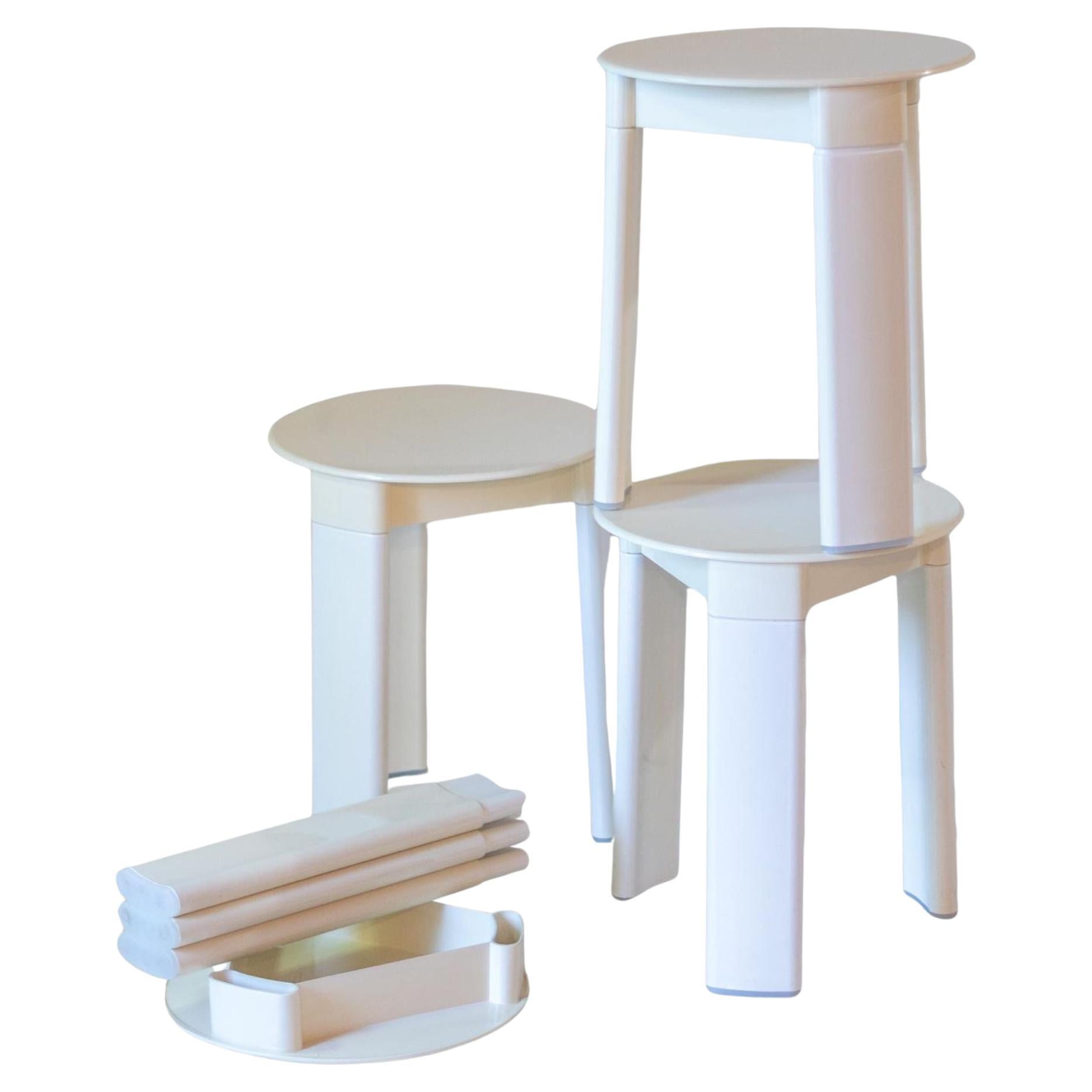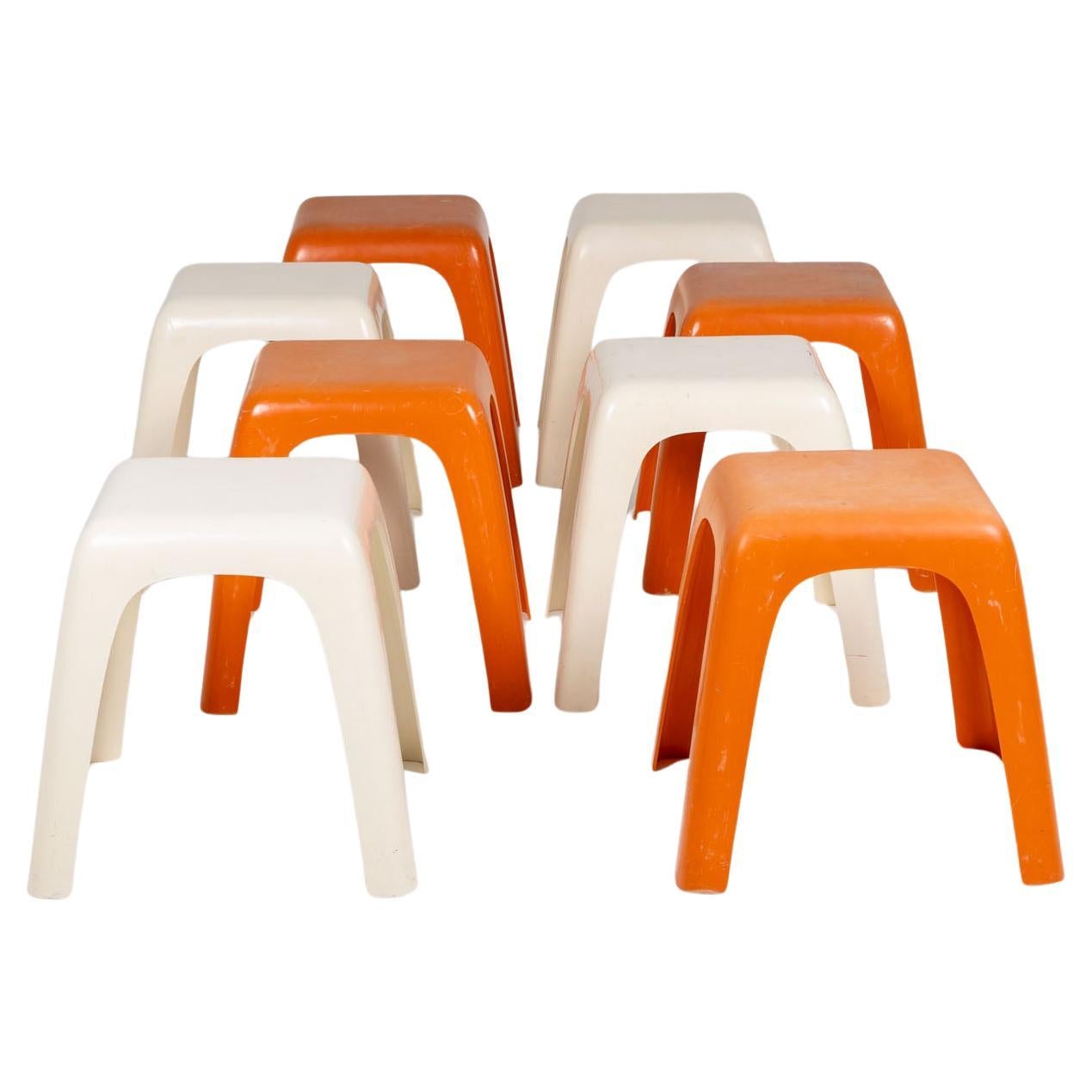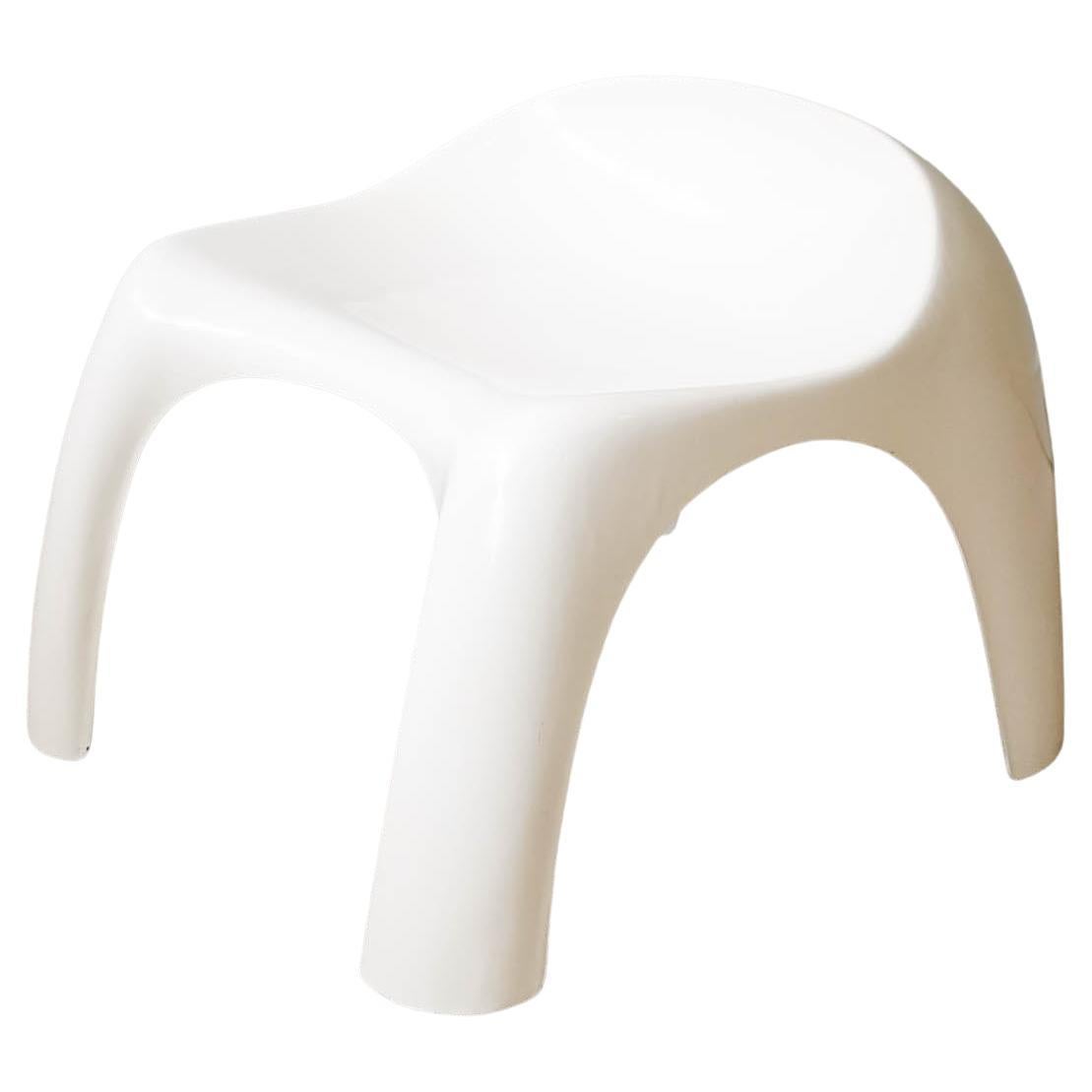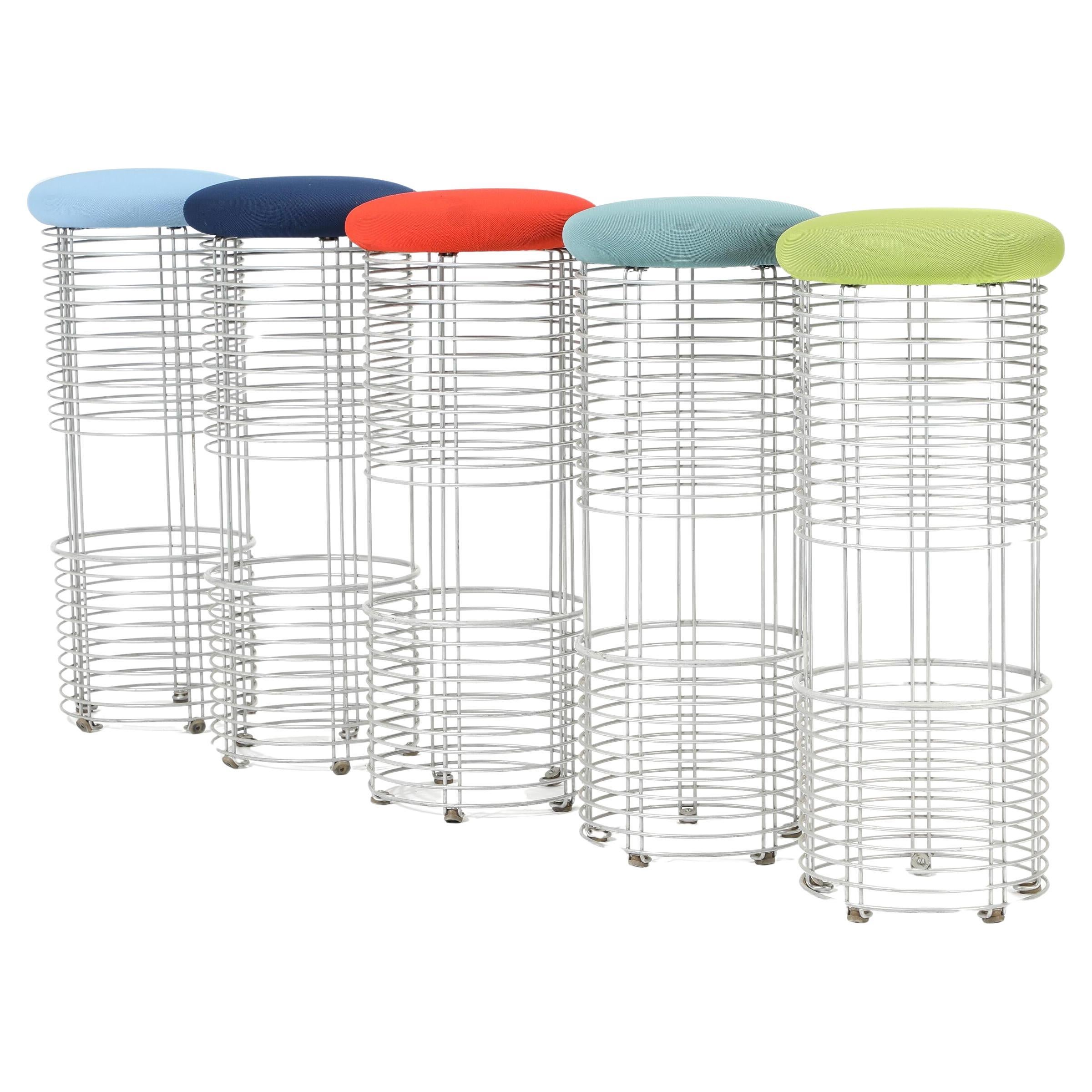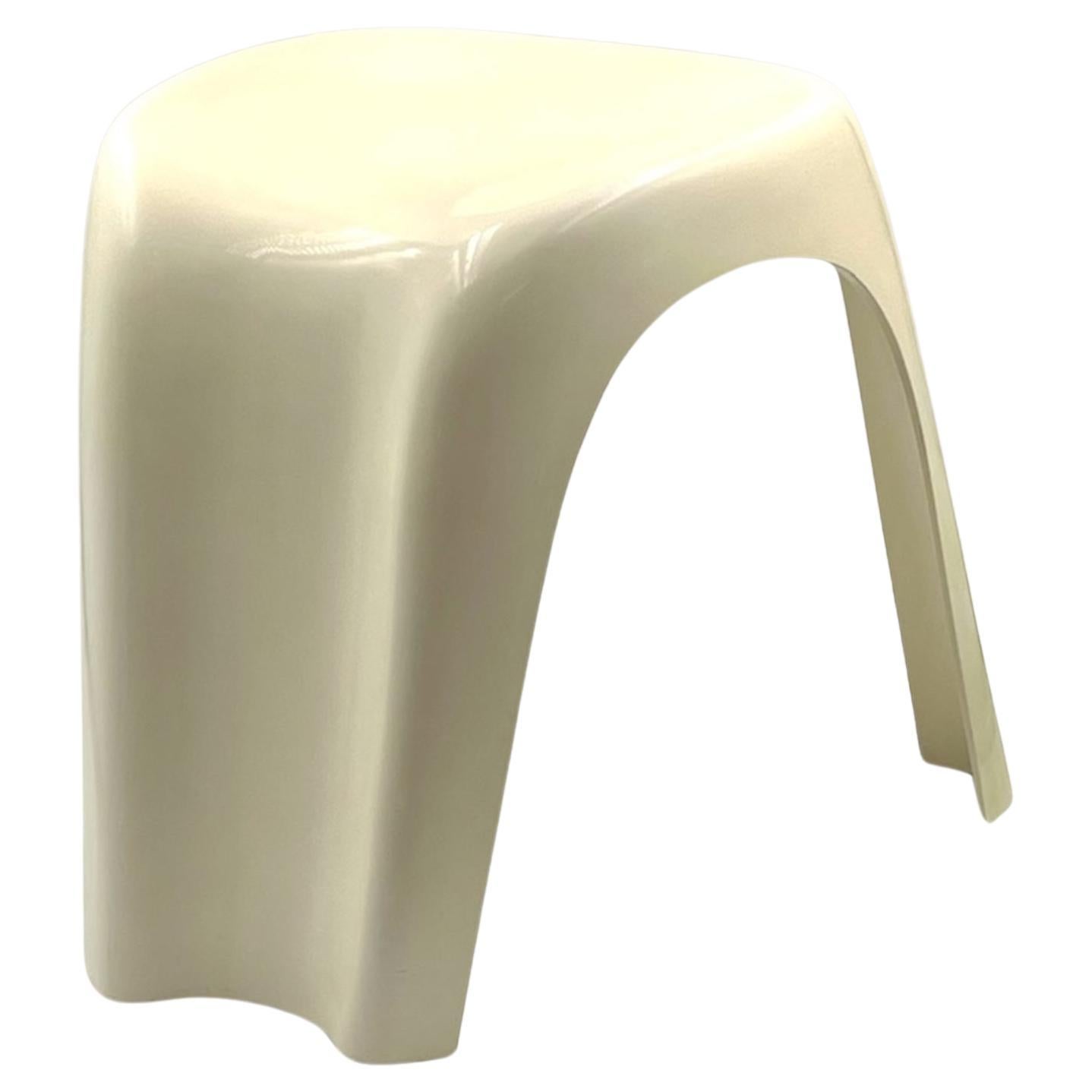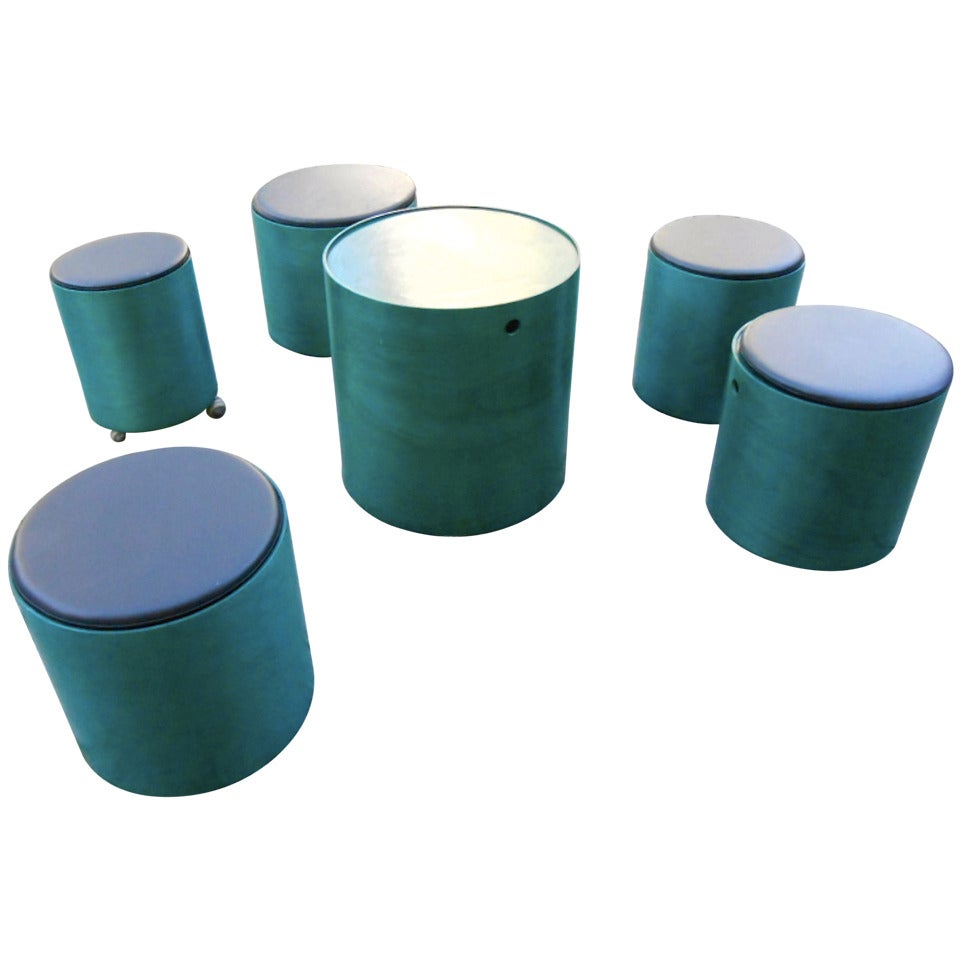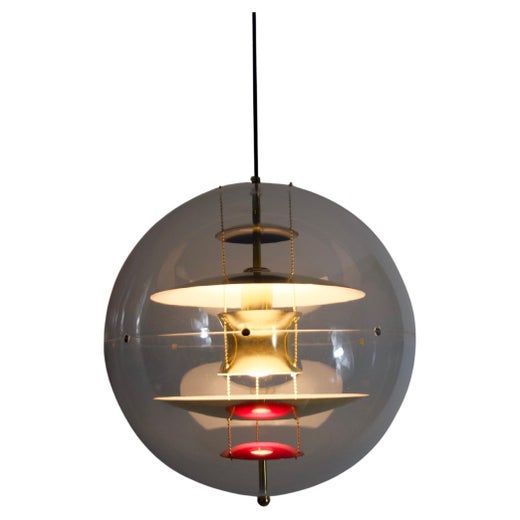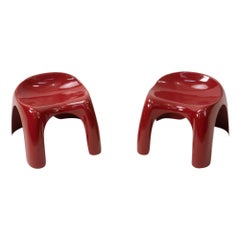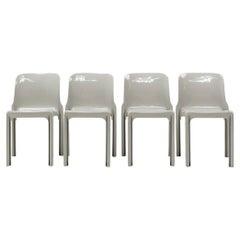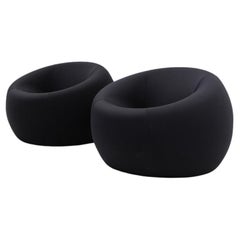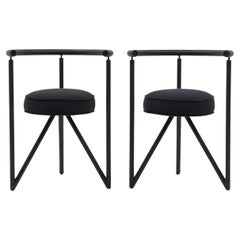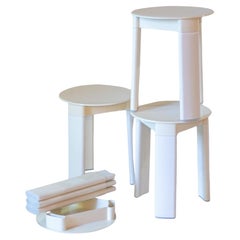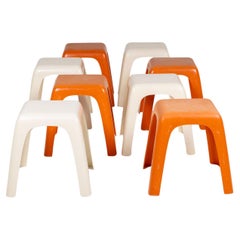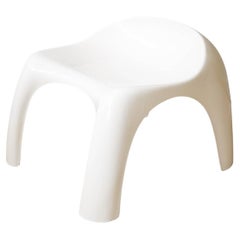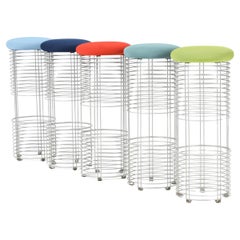Private re-edition for PRADA of iconic 1960s Inflatable Stool by Verner Panton
About the Item
- Creator:
- Dimensions:Height: 17.72 in (45 cm)Width: 20.48 in (52 cm)Depth: 22.84 in (58 cm)Seat Height: 17.72 in (45 cm)
- Style:Post-Modern (Of the Period)
- Materials and Techniques:
- Place of Origin:
- Period:
- Date of Manufacture:2018
- Condition:Wear consistent with age and use. good condition, some minors flaws on some stools.
- Seller Location:Renens, CH
- Reference Number:1stDibs: LU5599245384212
Verner Panton
Verner Panton introduced the word “groovy” — or at least its Danish equivalent — into the Scandinavian modern design lexicon. He developed fantastical, futuristic forms and embraced bright colors and new materials such as plastic, fabric-covered polyurethane foam and steel-wire framing for the creation of his chairs, sofas, floor lamps and other furnishings. And Panton’s ebullient Pop art sensibility made him an international design star of the 1960s and ’70s. This radical departure from classic Danish modernism, however, actually stemmed from his training under the greats of that design style.
Born on the largely rural Danish island of Funen, Panton studied architecture and engineering at Copenhagen’s Royal Danish Academy of Fine Arts, where the lighting designer Poul Henningsen was one of his teachers. After graduating, in 1951, Panton worked in the architectural office of Arne Jacobsen, and he became a close friend of Hans Wegner's.
Henningsen taught a scientific approach to design; Jacobsen was forever researching new materials; and Wegner, the leader in modern furniture design using traditional woodworking and joinery, encouraged experimental form.
Panton opened his own design office in 1955, issuing tubular steel chairs with woven seating. His iconoclastic aesthetic was announced with his 1958 Cone chair, modified a year later as the Heart Cone chair. Made of upholstered sheet metal and with a conical base in place of legs, the design shocked visitors to a furniture trade show in Copenhagen.
Panton went on to successive bravura technical feats. His curving, stackable Panton chair, his most popular design, was the first chair to be made from a single piece of molded plastic.
Panton had been experimenting with ideas for chairs made of a single material since the late 1950s. He debuted his plastic seat for the public in the design magazine Mobilia in 1967 and then at the 1968 Cologne Furniture Fair. The designer’s S-Chair models 275 and 276, manufactured during the mid-1960s by August Sommer and distributed by the bentwood specialists at Gebrüder Thonet, were the first legless chairs crafted from a single piece of plywood.
Panton would spend the latter half of the 1960s and early ’70s developing all-encompassing room environments composed of sinuous and fluid-formed modular seating made of foam and metal wire. He also created a series of remarkable lighting designs, most notably his Fun chandeliers — introduced in 1964 and composed of scores of shimmering capiz-shell disks — and the Space Age VP Globe pendant light of 1969.
Panton’s designs are made to stand out and put an eye-catching exclamation point on even the most modern decor.
Find vintage Verner Panton chairs, magazine racks, rugs, table lamps and other furniture on 1stDibs.
Prada
The House of Savoy coat of arms and knotted rope on Prada’s seal herald that the iconic Italian luxury fashion house was named Official Supplier to the Italian Royal Household in 1919. Started in 1913 by Mario Prada, the brand’s original shop in Milan’s Galleria Vittorio Emanuele II still has the mahogany shelves that displayed its early wares such as travel items and handbags. Today, these fine leather goods are joined by the clothing, wallets and other various accessories that keep the brand on the cutting edge of fashion.
When Mario Prada’s granddaughter, Miuccia Prada (b. 1949), inherited the business from her mother in the late 1970s, Prada was recognized for its quality craftsmanship, yet it was still a modest-sized company. Miuccia, an enthusiast of unconventional Italian filmmakers who’d earned a Ph.D. in political science, introduced the concept of using pocone — a military-grade water-resistant nylon that feels like silk.
Nylon revolutionized the fashion house’s business, with the first Prada nylon backpack released to universal acclaim in 1984. Soon the durable, water-resistant material was incorporated into Prada’s ready-to-wear collections for both men and women. No one had previously considered nylon a part of luxury fashion, and it wasn’t long before the family-owned company best known for its luggage was leading modern style that emphasized function as much as form.
Characterized by clean lines and a refined elegance that signaled the new direction of the legacy brand, Miuccia Prada debuted her first ready-to-wear collection for women in Fall/Winter 1988. More inventive fashion would follow in the ensuing years, such as the 1993 launch of the more affordable, more playful Miu Miu line, which was aimed at a younger audience, and the introduction of Prada Sport in 1997 — a collection now widely seen as prescient for its embrace of athleisure.
Prada has regularly gone against the grain to elevate styles that have long been out of fashion. In 1996, there were dresses and skirts in clashing patterns and muted earth tones that seemed flat and outdated, all worn with chunky high wedge sandals. Fanny packs followed three years later, and elaborate lace in 2008. Each season continues to bring new eye-catching innovations for the historic brand, including enhanced attention to sustainability with Prada Re-Nylon, a new line of bags created from recycled ocean plastic.
Today, find a wide variety of vintage Prada evening dresses, bags and other items on 1stDibs.
- ShippingRetrieving quote...Shipping from: Lausanne, Switzerland
- Return Policy
More From This Seller
View AllVintage 1960s Italian Mid-Century Modern Stools
Plastic
Vintage 1960s Italian Mid-Century Modern Side Chairs
Fiberglass
Early 2000s Italian Post-Modern Lounge Chairs
Fabric, Foam
Vintage 1980s French Mid-Century Modern Chairs
Steel
Early 2000s German Mid-Century Modern Chairs
Metal
Vintage 1970s Italian Mid-Century Modern Chairs
Metal
You May Also Like
Vintage 1970s Italian Mid-Century Modern Stools
Plastic
Vintage 1980s Italian Modern Stools
Plastic
Vintage 1970s Portuguese Mid-Century Modern Stools
Fiberglass
Vintage 1970s Danish Brutalist Stools
Metal, Wire
Vintage 1970s Italian Space Age Stools
Plastic
Vintage 1960s German Mid-Century Modern Living Room Sets
Plywood
Read More
113 Chairs That Prove Danish Design Isn’t Limited to Denmark
In an innovative display, the Designmuseum Danmark is permanently exhibiting the 20th century's most iconic seats.
Verner Panton’s Bold Designs From the 1960s and ’70s Are Showing Up Everywhere
From high-fashion runways to a brand-new book, the groovy, futurist work of this groundbreaking Danish creative is receiving newfound — and much deserved — attention.
